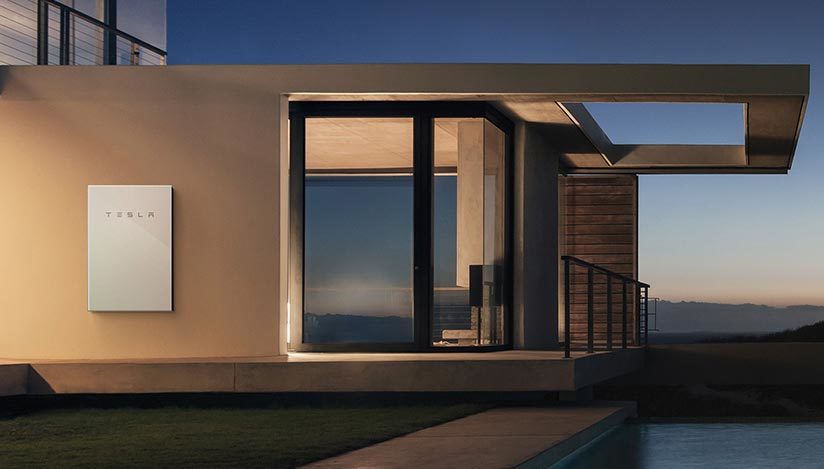Whole Home vs. Partial Load Energy Battery Systems
Home battery solutions are rapidly becoming more popular in California for a couple of reasons. First, PG&E and other major utility companies are transitioning customers to time-of-use pricing—under which customers are charged a varying rate based on when they use electricity—which has incentivized customers to find ways to reduce their energy usage during high-cost peak-pricing periods.
Secondly, many Northern Californians were caught off guard by the severity of the blackouts imposed by PG&E as part of their plan for reducing the potential of fires caused by aging electrical transmission equipment. With homeowners losing power for days at a time, and being informed by PG&E that for the next decade they should expect a dozen or more such blackouts during years with severe fire seasons, it’s easy to see why homeowners are turning to solar-powered home battery systems to ensure their comfort and well-being during blackouts, and to reduce their energy costs during normal periods.
But like the fuel-powered generators that they’re increasingly replacing, battery-based electricity storage systems come in two versions: whole home and partial load. Understanding the costs, capabilities and limitations of these two approaches to energy storage will help you to better choose the solution that’s right for your needs.
Whole home energy storage systems are designed to power everything within a home—but this approach requires many compromises.
Many homeowners dream of an energy storage solution that allows them to continue living their life without compromise during a blackout—grabbing a drink out of an ice-cold fridge, then stopping to turn on the air conditioner before walking back to the living room to sit down in front of the TV.
However, even with an energy storage system that is a ‘whole home’ solution on paper, this really isn’t a realistic goal. Even an extremely large, deluxe battery system cannot store enough electricity to power a whole home for very long, and regardless of the amount of energy storage, battery systems often can’t provide for the entirety of a household’s energy needs with carte blanche usage. For perspective, a decent-sized central air conditioner requires about 3.5 kW to 5 kW to run. That means you might be able to run your AC, but you would have to sacrifice the food in your refrigerator to do so.
True whole home electricity storage systems require the home to be tailored to the system as much as the system is tailored to the home.
But even with the ideal high efficiency home, a home battery system won’t allow for running everything in your home for more than a few hours. If you’re simply looking to time-shift your energy usage—charging your batteries via solar power and/or from the grid during the day and tapping into the battery storage at night—to avoid costly evening time-of-use prices, a whole home energy storage system can handle the essentials for an evening. But in the case of a blackout, your battery backup will run out of juice after only a few hours of heavy usage, leaving you entirely without power until either the power comes back on, or there’s enough sunlight to begin recharging the battery.
For the many reasons outlined above, a partial-load battery backup system is much more realistic, useful, and affordable for homeowners.
Partial-load battery backups are integrated into only select home circuits to provide power to crucial, low-power home appliances.
If you knew that PG&E was about to cut off power for a few days, what items in your home would you absolutely need to remain powered?
Your refrigerator and freezer would be at the top of the list. You would almost certainly want lights in your living room, kitchen, and bedroom(s). Odds are that having a working microwave would be helpful, especially since you’d only need to run it for a couple minutes at a time, and it would require much less power than a stove and electric range.
You are probably thinking about your specific home situation right now and considering how you would prioritize your needs, and what you could afford to do without for a few days. Essentially, creating an energy budget.
That’s the exact idea behind partial-load battery backup systems. They don’t power everything, nor are they meant to. Instead, they are integrated into your home so that they only power crucial home systems. No, you’re not going to be running the air conditioner or your big screen TV, but you can keep your food cold and the lights on until power is restored.
In the vast majority of cases, a partial-load battery system is the most realistic and achievable means of securing your home against the inconvenience of blackouts, while also allowing you to flex your power usage to reduce your time-of-use power costs.
If you’re considering installing a home battery system, Capital City Solar can answer all your questions and help you better understand your energy needs. We are a certified Tesla Powerwall installer and offer other battery system solutions as well. Homeowners can enjoy far more flexibility than ever before, as it is now possible to install energy storage on existing solar panel systems, new solar installations, as standalone storage, or even opt to combine battery storage with a generator. Contact us to learn more about how you can achieve your goals for energy independence.

